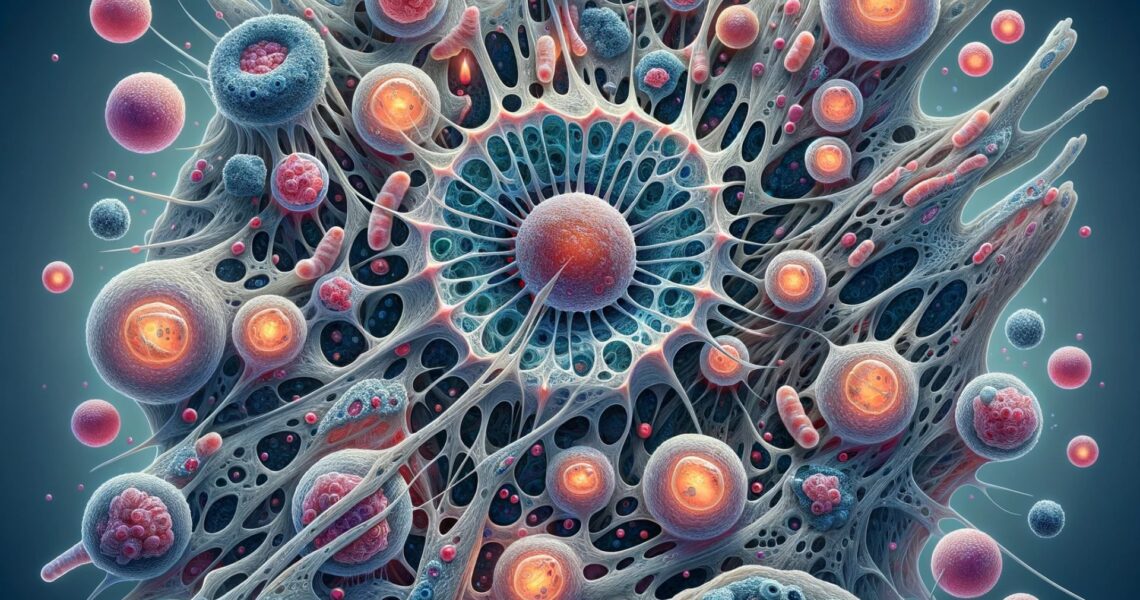
Mesenchymal Stem Cells: Exploring the Future of Regenerative Medicine
16/05/2024Have you ever wondered if there are cells capable of transforming into any cell type in the body? Or whether we’ll be able to create complex, functional organs in the future? These intriguing questions are at the heart of regenerative medicine. A key player in this field are mesenchymal stem cells (MSCs). But what exactly are MSCs, and what challenges do we face in using them?
What are Mesenchymal Stem Cells?
Mesenchymal stem cells are a type of multipotent stem cell found in various tissues throughout the body. Here are some of their main characteristics:
- Self-renewal: MSCs can divide and renew themselves over extended periods.
- Differentiation: They have the remarkable ability to differentiate into specialized cell types such as muscle, brain, cartilage, bone, and fat cells.
- Distribution: MSCs are primarily found in the bone marrow but also reside in the peripheral blood, skin, and even the nervous system [1].

Advantages and Disadvantages of Mesenchymal Stem Cells
The use of MSCs in regenerative medicine comes with both significant benefits and notable challenges.
Advantages:
- Long-term Culture: MSCs can grow and propagate in culture for prolonged periods without losing their essential characteristics and capacities.
- Secretion of Compounds: They secrete a variety of compounds that regulate bone and blood-related processes, contributing to their regenerative capabilities.
- Autologous Use: Often, the risk of immune rejection is zero because MSCs can be harvested from the patient’s own body.
Disadvantages:
- Limited Regenerative Potential: In pathological environments, the regenerative potential of MSCs can be limited.
- Influencing Factors: Factors such as donor age, the number of passages during in vitro expansion, culture conditions, and administration procedures can negatively impact the cells’ ability to survive and integrate into recipient tissue.
- Risks: There is a potential for tumorigenicity and a risk of infection during the isolation and administration procedures [2].
Current Approaches in Using Mesenchymal Stem Cells
Despite these drawbacks, MSCs are still highly valuable in regenerative medicine due to their versatile and powerful qualities. Initial treatments focused on cellular aspects, such as enhancing regenerative capabilities through transient genetic modifications [3]. However, recent studies have highlighted that the benefits of transplanted MSCs often stem from their paracrine activity cell-to-cell communication through the secretion of bioactive molecules.
This understanding has led to the development of treatments based on the compounds released by MSCs rather than the cells themselves. This shift from cell-based therapies to the use of MSC-derived products represents a significant advancement in the field, offering new avenues for treating a variety of conditions [4].

Future Prospects and Conclusions
The journey of mesenchymal stem cells in regenerative medicine is far from over. There’s still a considerable amount of research needed to fully understand and harness their potential. Challenges such as optimizing cell survival, improving integration into tissues, and ensuring safety must be addressed.
However, the progress made in recent years is incredibly promising. As research continues to advance, MSCs hold the potential to revolutionize treatments for a wide range of diseases. From curing bone pathologies like osteoporosis to treating severe heart diseases, the future of regenerative medicine looks bright with the potential use of MSCs.
In conclusion, while many hurdles remain, mesenchymal stem cells offer a tantalizing glimpse into the future of medicine. Their ability to differentiate into various cell types and secrete beneficial compounds places them at the forefront of regenerative therapies. Continued research and investment in this field will undoubtedly lead to breakthroughs that could transform how we approach healing and restoring the human body.
Stay tuned to the world of regenerative medicine, it’s a field where science fiction increasingly becomes science fact, promising a future where we might cure complex diseases simply by administering specialized cells or their derivatives.
References
- Bobis, S., Jarocha, D., & Majka, M. (2006). Mesenchymal stem cells: characteristics and clinical applications. Folia histochemica et cytobiologica, 44(4), 215-230.
- Kim, H. J., & Park, J. S. (2017). Usage of human mesenchymal stem cells in cell-based therapy: advantages and disadvantages. Development & reproduction, 21(1), 1.
- García-Sánchez, D., González-González, A., García-García, P., Reyes, R., Pérez-Núñez, M. I., Riancho, J. A., … & Pérez-Campo, F. M. (2021). Effective osteogenic priming of mesenchymal stem cells through LNA-ASOs-mediated Sfrp1 gene silencing. Pharmaceutics, 13(8), 1277.
- González-González, A., García-Sánchez, D., Dotta, M., Rodríguez-Rey, J. C., & Pérez-Campo, F. M. (2020). Mesenchymal stem cells secretome: The cornerstone of cell-free regenerative medicine. World journal of stem cells, 12(12), 1529.